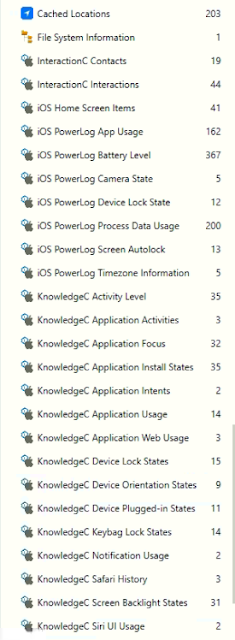Well, I thought I was going to take a break this week from mobile but Apple decided that wouldn't be the case. It dropped iOS 14 this week on us after its big announcement event on Tuesday. While we didn't get any new iPhones, they did announce some swanky new watches and iPads. They also announced that iOS 14 would be dropped the following day. Obviously I had to take a look.

Starting prior to the launch of iOS 14 I took a couple of backups of my test iPad. One with encryption and one without. All was expected to be with iOS 13.7. After downloading iOS 14 (or iPadOS 14 if you want to get super technical), I proceeded the same. Took two backups, one with encryption, and one without. Here are some preliminary thoughts on the data and procedures with more to come over the coming posts.
[Note: all of the backups were taken either using iTunes on Windows or the built-in functionality of Finder in macOS 10.15.6 I also attempted using several versions of libimobiledevice but it wasn't able to generate backups.]
To see a bigger picture I also took my daily driver iPhone which I upgraded to iOS 14 for the same spin. Didn't grab a 13.7 to compare it to, but still parsed it for information and all was I generally expected.
Encryption:
Encrypting the backups worked the same in iOS 14 as it did in 13.7. It still requires the use of the PIN code or password in order to set a backup encryption password on the device. Decrypting the data also seemed to use the same method as it did in 13.7. I used AXIOM to decrypt and parse the backups and it worked just as expected.
Encryption vs No Encryption:
As in iOS 13.7, several data points were only available with backup encryption enabled. These were:
- Keychain
- Healthkit
- Call Logs
- Safari History
- SMS: HomeDomain-Library/SMS/sms.db
- EDIT: For more information on what iOS 14 added to iMessage and tracking it, see this post: iOS 14 - Message Mentions and Threading
- Call Logs: HomeDomain-Library/CallHistoryDB/CallHistory.storedata
- Contacts: HomeDomain-Library/AddressBook/AddresBook.sqlitedb
- Safari: HomeDomain-Library/Safari
- History.db
- Bookmarks.db
- BrowserState.db
- Other Safari Data: AppDomain-com.apple.mobilesafari
- Library/Preferences/com.apple.mobilesafari.plist
- Library/Safari/[Same PerSitePreferences.db and UserMediaPermissions.plist as mentioned in blog post here]
- [iPadOS]Downloads/Downloads.plist


No comments:
Post a Comment